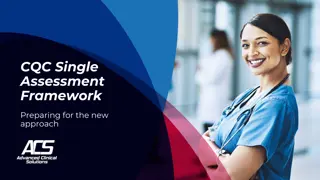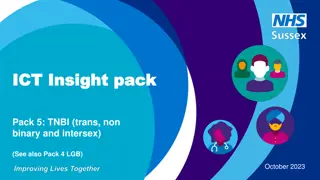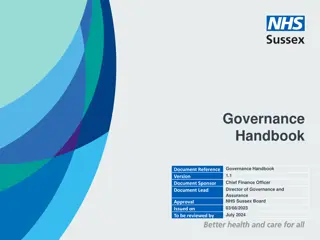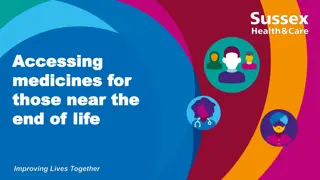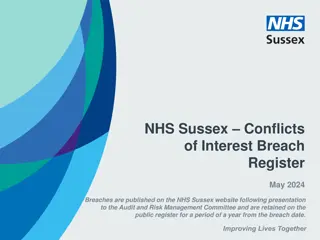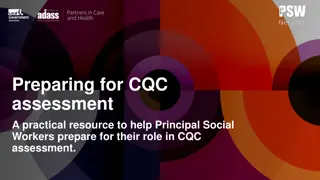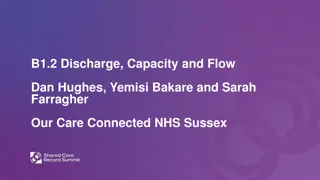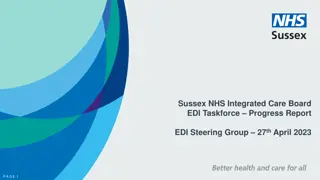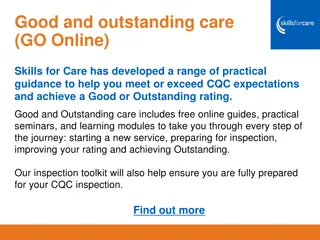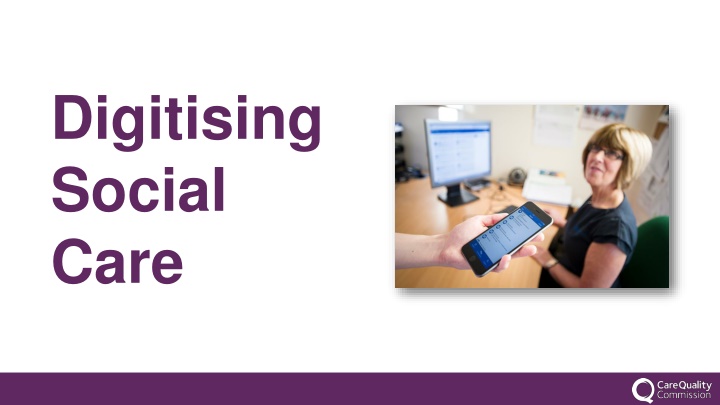
Benefits of Digitising Social Care Records
Transforming social care through digitisation is crucial for enhancing quality, efficiency, and security. Good digital records systems improve access, communication, and outcomes for service users and providers, while also benefiting the wider health and social care system.
Download Presentation

Please find below an Image/Link to download the presentation.
The content on the website is provided AS IS for your information and personal use only. It may not be sold, licensed, or shared on other websites without obtaining consent from the author. If you encounter any issues during the download, it is possible that the publisher has removed the file from their server.
You are allowed to download the files provided on this website for personal or commercial use, subject to the condition that they are used lawfully. All files are the property of their respective owners.
The content on the website is provided AS IS for your information and personal use only. It may not be sold, licensed, or shared on other websites without obtaining consent from the author.
E N D
Presentation Transcript
Digitising Social Care
Digitisation in social care: why it matters Good quality records underpin high-quality care. Good digital records far exceed capabilities of paper records Efficiency, automation, reporting and sharing In 2023 CQC published new guidance which sets out our policy position: Good quality records underpin safe, effective, compassionate, high-quality care . . . They are an essential part of achieving good outcomes for people who use services.
The benefits of a good digital records system For providers and staff: Recording information in real time will allow people in different locations to access and update it wherever they are. Staff will be able to do their job more effectively and efficiently. Digital systems will support effective quality monitoring of the service, enabling services to share and compare data to improve people s care. Storing information digitally is easier and needs less physical space. People s information will be handled more securely through automatic back-up of data, the cyber security of cloud-based services, and by using multi-factor authentication. For people using services: It s easier for people to access their own records. People will be able to spend more time with staff and engage in meaningful interactions with them. When people s needs change, services will be able to respond quickly and share information with partners in their care, making care safer. Risks such as medication errors, dehydration or missed care visits will be minimised. For the wider health and social care system: People s information can be used across the local health and care system to make sure their care is joined up and to support the needs of the local population. There will be better use of resources across the local health and care system, which can help to support other important health and care functions, such as service management, planning and research.
What does good look like? Regulation 17 (Good Governance) outlines minimum requirements to comply with the law Four Guiding Principles: 1. Person-Centred 2. Availability/Accessibility 3. Security 4. Governance NOTE: CQC do not endorse or recommend a specific digital social care record system and do not assess the standard or technical functioning, or capabilities of the digital record systems themselves.
On inspection: Accessing systems On site access: Recommend providing inspectors with guest login and read only access--all parties can be confident of no accidental data changes or loss. Inspectors should not use log in details of someone who is not present. Remote Access Access to provider electronic records should be on site only using the provider s systems/equipment The current advice is that in Adult Social Care inspections we do not access provider s care management systems remotely. We are working to develop and test and approach to remote access that meets legal, governance and security requirements Paper copies We will not usually request, but we can if this will prevent delay We may request specific formats where it is necessary for regulatory decision making or taking enforcement action. We will explain this request clearly.
Digital tools and technology in action Staff used a digital system to record administration of records. This showed how any medicine errors were identified and addressed in a timely way to ensure minimum impact occurred. This also highlighted if people refused medicines and alerted management to request assurances and guidance from a medical professional if this occurred regularly. -- Nursing Home rated Good Staff were confident people's care plans accurately reflected their current support needs and spoke positively about the digital care planning system used by the provider. Their comments included, [The care planning application] is absolutely amazing, the information you need is there on hand if you are not sure about anything" and "The care plan is absolutely accurate. We are encouraged to add and make changes to the care plan when we learn new information from people, I think it is amazing. Supported Living Service rated Good
Digital tools and technology in action An electronic system was purchased for staff to be able to record when they administered medicines. Medicine Administration Records (MAR) had moved from a paper format to a digital format. The system could also identify discrepancies or errors so that action could be taken immediately to remedy these. Staff told us the system was easy to use and was an improvement. A staff member said, "It is much better, as it gives us warnings and alerts to let us know if we have not given enough time between medicine doses or if we have already given medicines. It cuts out errors. Care Home rated Good The service worked with small businesses looking at digital innovation. For example, using an app to improve a person's gait as well as monitoring post-stroke support and tracking and discussing with insurers how to introduce a digital technology assessment service. One person had had a functional electrical stimulation (FES) bike sourced as part of a tailored physiotherapy programme. This had enabled them to grow stronger by using electrical pulses to pedal a bike despite their paralysis. Another person said of their robotic exoskeleton, "The use of technology makes what can seem impossible seem within my reach again." This showed a modern, forward thinking approach to actively seeking out new technology to benefit people throughout the sector and included discussions about participating in various research trials. Domiciliary Care Rehabilitation Service rated Outstanding
Wider Technology and Innovation in ASC Remote Monitoring Tools (including video and audio devices) Expanding in residential and home care services Technology Enabled Care Technologies such as telehealth, telecare, telemedicine, telecoaching and self-care apps have the potential to transform the way people engage in and control their own healthcare, empowering them to manage it in a way that is right for them. Assistive technology and devices Assistive technology refers to devices or systems that help maintain or improve a person s ability to do things in everyday life. These can assist with a range of difficulties, including problems with memory and mobility. How CQC assesses the quality of technology-enabled care - Care Quality Commission
Guidance and Resources https://www.cqc.org.uk/guidance-providers/adult-social-care/digital-record- systems-adult-social-care-services What Good Looks Like Framework Professional Records Standards Body (PRSB) sets out standards for good quality care records Digitising Social Care - Assured Supplier List Adult Social Care Digital Skills Framework Using surveillance in your care service - Care Quality Commission (cqc.org.uk) How CQC assesses the quality of technology-enabled care - Care Quality Commission

